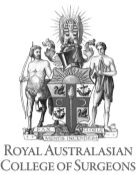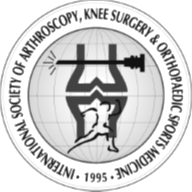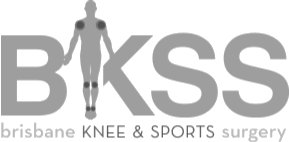ACL Tear
What is an Anterior Cruciate Ligament?
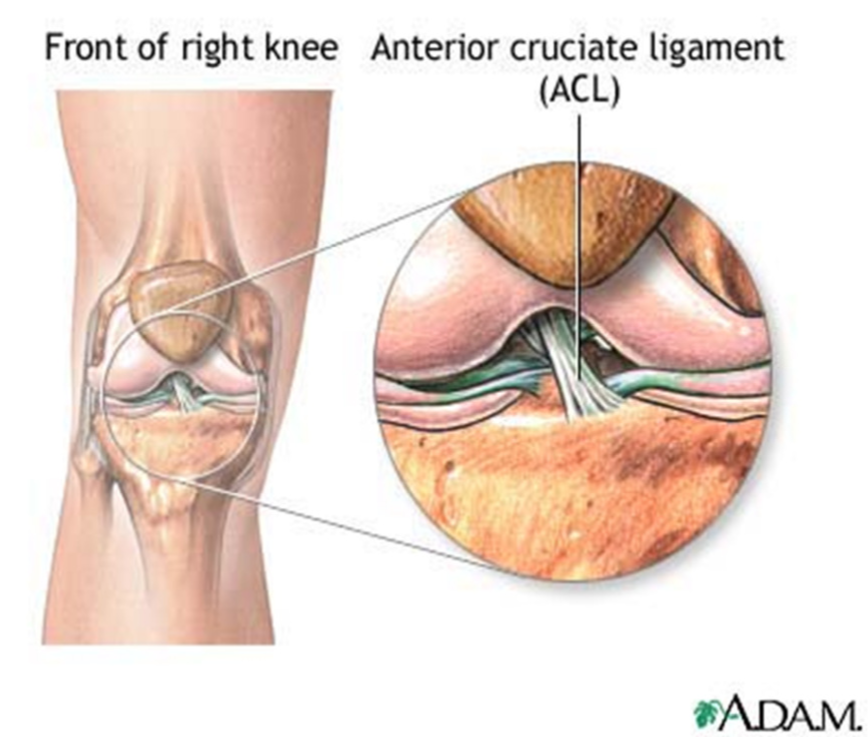
The cruciate ligaments are found inside your knee joint and cross each other to form an “X” with the anterior cruciate ligament (ACL) in front and the posterior cruciate ligament (PCL) in back. The cruciate ligaments are important stabilising
structures of the knee and control the back and forth motion of your knee.
The ACL is one of the four major ligaments of the knee. It is an important stabilizing mechanism for the knee, and allows rotational movements such as turning, twisting and sidestepping.
What causes an anterior cruciate ligament tear?
An ACL tear or rupture is most often a sports-related injury, but they can also occur during rough play, motor vehicle collisions, falls, and work-related injuries. Most often ACL tears occur when changing direction rapidly, stopping suddenly or landing from a jump.
Several studies have shown that female athletes have a higher incidence of ACL injury than male athletes in certain sports. It is believed that this is due to differences in physical conditioning, muscular strength, and neuromuscular control. Other suggested causes include differences in pelvis and lower extremity (leg) alignment, increased looseness in ligaments, and the effects of oestrogen on ligament properties.
About half of all injuries to the anterior cruciate ligament occur along with damage to other structures in the knee, such as articular cartilage, meniscus, or other ligaments. Unfortunately the ACL cannot repair itself and the knee often becomes unstable or gives way. Long term this may lead to arthritis or acute meniscal tears.
What symptoms should I look out for?
When you injure your anterior cruciate ligament, you might hear a “popping” noise and you may feel your knee give out from under you. Other typical symptoms include:
- Pain with swelling.
- Loss of full range of motion
- Tenderness along the joint line
- Discomfort while walking
How is it diagnosed?
Your surgeon will take a full medical history and conduct a physical examination to confirm a tear or rupture of the ACL. During the examination, your doctor will check all the structures of your injured knee, and compare them to your non-injured knee. Most ligament injuries can be diagnosed with a thorough physical examination of the knee.
Sometimes an MRI will be necessary to show if any other ligaments and surrounding structures of the knee are damaged. It is quite common to damage the meniscus and other ligaments at the same time as the ACL. An X- ray may also be arranged if any fractures are suspected.
What treatment options are available?
While it is generally recommended that you have surgery if you wish to get back to sports which involve running and pivoting, it is not absolutely necessary to have this ligament reconstructed. Treatment for an ACL tear will vary depending upon the patient’s individual needs. For example, the young athlete involved in agility sports will most likely require surgery to safely return to sports. Non-surgical treatment may be effective for patients who are elderly or have a very low activity level. If the overall stability of the knee is intact, your doctor may recommend simple, nonsurgical options such as:
- Bracing – Your doctor may recommend a brace to protect your knee from instability. To further protect your knee, you may be given crutches to keep you from putting weight on your leg.
- Physiotherapy – As the swelling goes down, a careful rehabilitation program is started. Specific exercises will restore function to your knee and strengthen the leg muscles that support it.
What is the surgical treatment option?
Surgery will usually be considered after an initial 4 to 6 week period, which allows the inflammation and pain from the injury to settle. Most ACL tears cannot be sutured (stitched) back together and therefore the ligament must be reconstructed by using another tendon or ligament as a substitute. Your doctor will replace your torn ligament with a tissue graft which can be obtained from several sources. They may be harvested from the patellar tendon, which runs between the kneecap and the shinbone, or the hamstring tendons at the back of the thigh. On occasions a quadriceps tendon may be used. Another option available is using a cadaver graft (allograft). There are advantages and disadvantages to all graft sources. You should discuss graft choices with your own orthopaedic surgeon to help determine which is best for you.
The risks of ACL surgery include:
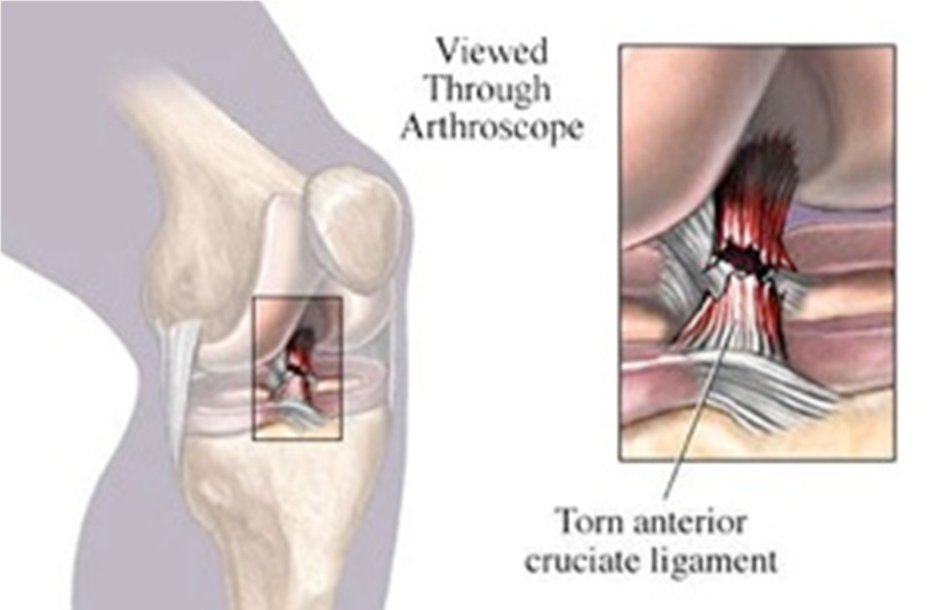
- infection
- persistent instability and pain
- stiffness
- difficulty returning to your previous level of activity
In general, this surgery is very successful and while it does not give you a normal knee, it does stop the knee from repetitively dislocating and makes it feel stable.
If you do not elect to have surgery, it is strongly advised that you give up sports or activities that involve side stepping or pivoting
How important is rehabilitation following an ACL tear?
It does not matter whether your treatment involves surgery or not, rehabilitation plays an important, yet often neglected, role in getting you back to your daily activities. A physiotherapy program is a necessary part of the treatment and is recommended to start as early as possible, and will focus on restoring motion and strength, and improving the stability of the knee joint to prevent future injuries. It is critically important that each individual progress through their rehabilitation as their knee allows. Progressing too quickly or too slowly can be detrimental to overall results from surgery, therefore it is important to be guided by your physiotherapist and doctor.
The patient information sheets are intended to provide general information only and are not a substitute for medical advice about your particular condition.




